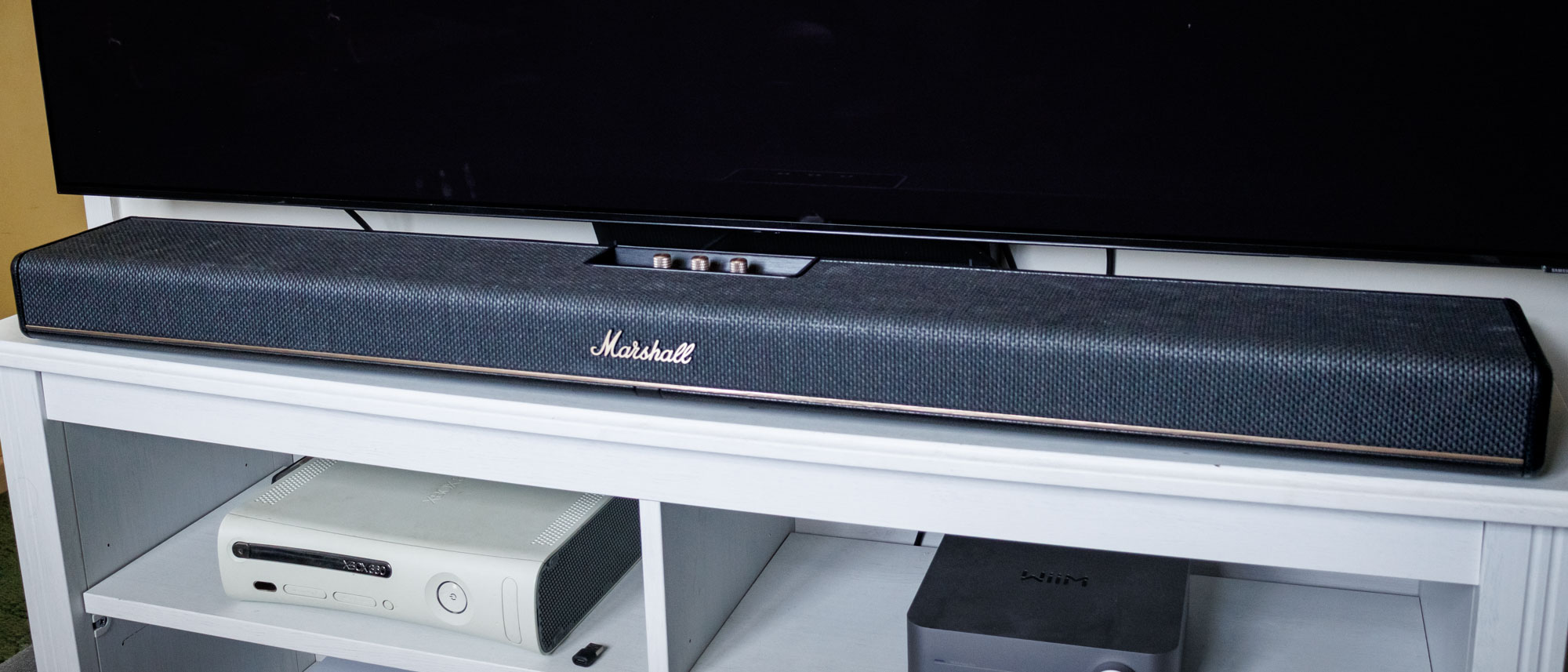Tom's Guide Verdict
Marshall’s first foray into soundbars looks immaculately cool with its brass knobs and unapologetic styling, and then wows with some of the most musical sound I’ve heard from a 5.1.2 soundbar. WiFi connection makes sure it’s easy to use, with as few roadblocks between you and your music as possible. Dolby Atmos and DTS:X support means that you’ll never have to worry about surround options either.
Pros
- +
Excellent musical sound and bassy rumble
- +
Epic rock n’ roll stylings
- +
Loads of inputs
- +
Standard sub output
- +
WiFi streaming
Cons
- -
Very deep
- -
Style might be divisive
- -
Lots of strong competition
- -
“Only” 5.1.2
Why you can trust Tom's Guide
Price: $999/£899
Colors: Black
Size: H x 2.9" D x 5.7" W x 43.3"
Weight: 15.5 pounds
Connectivity: WiFi 6, Bluetooth 5.3, Ethernet, HDMI, AirPlay 2, RCA,
USB-C
Bluetooth range: up to 30 feet (9 m)
Custom EQ: Yes
Voice assistant: No
Surround: 5.1.2
Multi-speaker connectivity: Yes
The Marshall Heston 120 has a tough job on its hands. It not only has to prove that Marshall has the chops to live under your TV in the form of a multi-channel soundbar, but that it can do it better than any of the other options you can buy for a similar price.
It seems that Marshall pulled its suspenders on, slapped its ripped jeans, and grabbed some pretty impressive sound gear from its gig bag to make its new soundbar a success. The Heston 120 is a very impressive soundbar to rival the likes of the Sonos Arc Ultra with a pair of built-in subwoofer drivers, excellent repairability, and that unique style that just screams “crank it to 11.”
To find out if it’s going to land a place on our list of the best soundbars, I’ve lived with the soundbar for the last few weeks — and now I’ve come to my verdict: The Heston 120 is an excellent alternative to the competition, albeit with a couple of caveats for some users.
Here’s the whole Heston 120 story.
Marshall Heston 120 review: Cheat Sheet
What is it? Rock ‘n roll soundbar from the kings of the genre
What does it cost? $999/£899
Who is it for? People looking for a new soundbar that looks the part, with top-notch inputs and great musical sound
What do we like? Its sense of style, sound quality for movies and music, and its significant bassy rumble from its pair of sub drivers
What don’t we like? It’s expensive, and some might not appreciate its ‘in your face’ style
Marshall Heston 120 review: Price and availability
At $999 / £899, the Heston 120 has been positioned against the likes of the Sonos Arc Ultra ($999 / £999), Samsung's latest flagship soundbars, and other premium surround options from JBL like the JBL BAR 1300X.
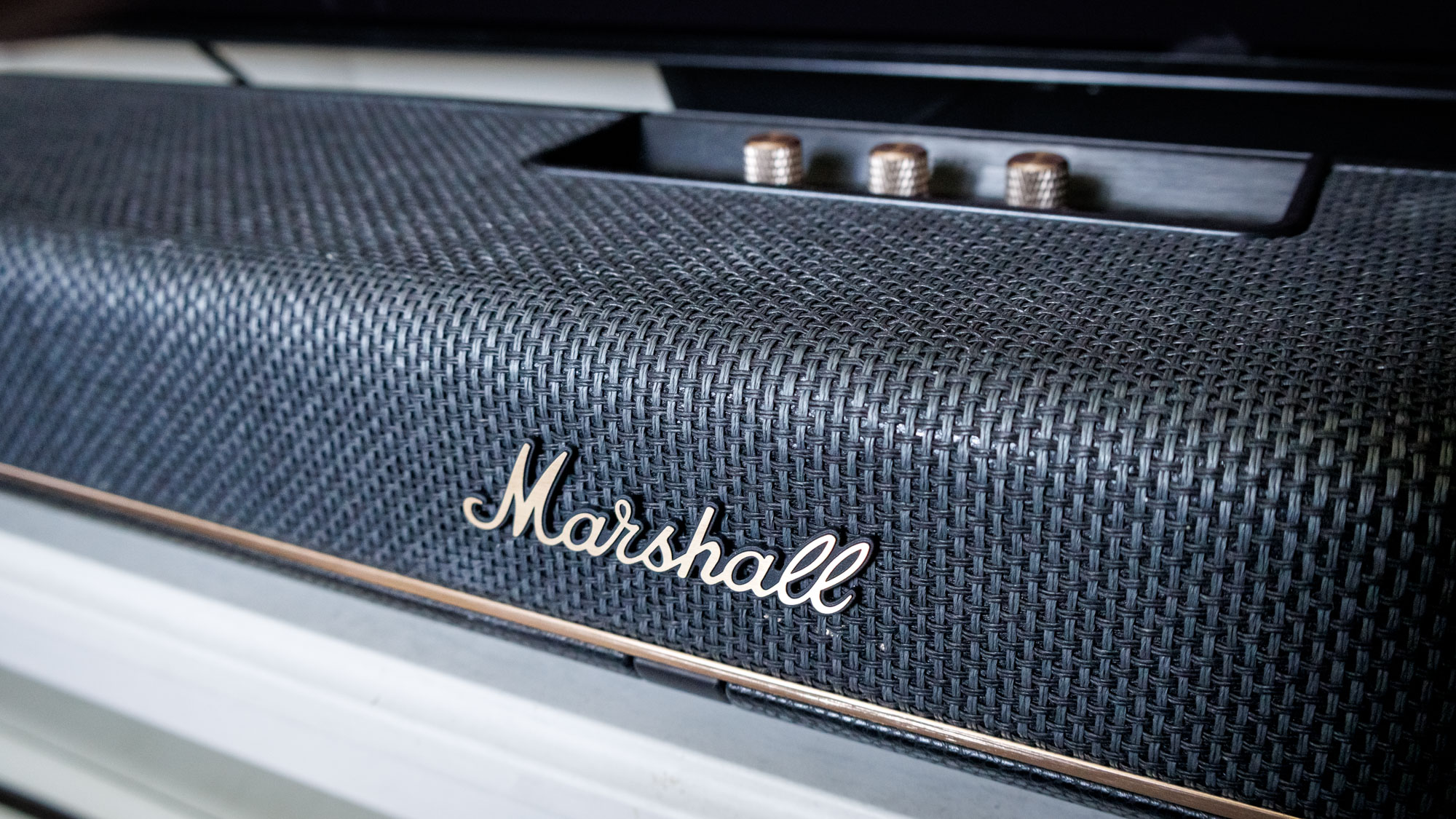
In order to justify that price the Heston is built like a tank, features a unique, rock ‘n roll-inspired design, and packs in some audio goodies for music lovers just as much as movie buffs.
Get instant access to breaking news, the hottest reviews, great deals and helpful tips.
But that doesn’t stop it from being in a precarious position, given that it doesn’t quite offer the same surround options as the Sonos or the included subwoofer of Samsung’s bars.
In order to compete, the Marshall relies on its looks and musical tuning. Make no mistake, it is worth every one of the one thousand dollars it costs, but it joins a very crowded space.
Marshall Heston 120 review: Design
- Look at it
- No seriously, it’s super cool looking
- Although it’s likely not to everyone’s taste
Marshall’s home audio division has become known for a certain style: amp-like speakers and headphones, covered with premium fabric and brass accents. Expect control knobs galore, and a punk-rock attitude.
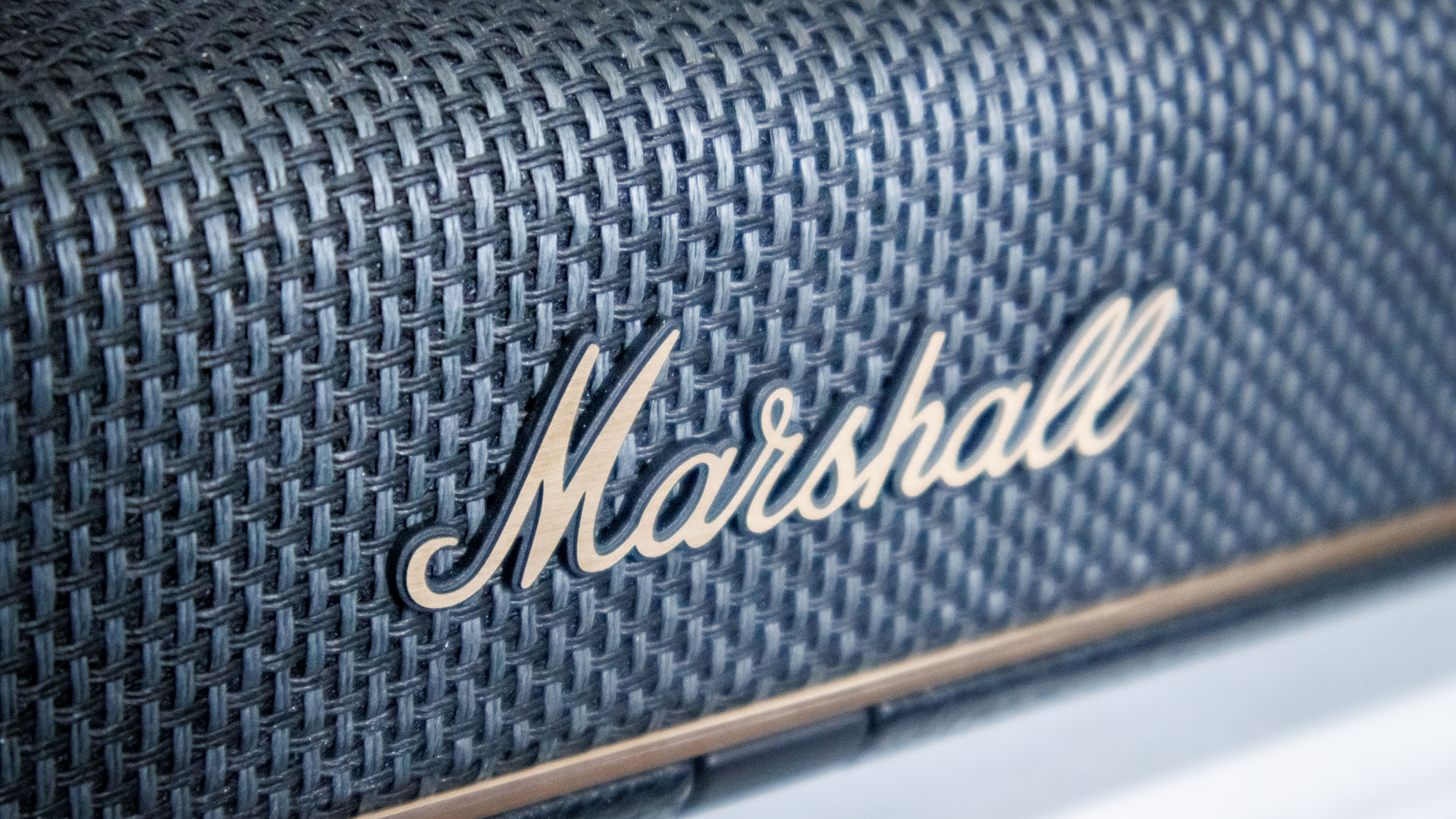
The Heston 120 stretches that design out to fit a large TV stand, retaining all the key elements of the marque's house style — rugged endplates that look ready to hit the road on tour, a fabric mesh that would look at home on stage with Slash, and the all-important brass logo to top things off. The bronze colored control knobs on top wrap up the design, and I think it looks great.
It’s not going to fit into every single living room style because of its unique style, but it nails its audio credentials to the mast like little else.

Going back to the size of the soundbar. You’re going to need a big TV, and a large TV stand to boot. It’s shorter than the Samsung soundbar options or the Sonos Arc Ultra by a fraction of an inch, but it makes up for it in depth. Make sure you do some measurements before buying to make sure that it fits — things were tight on my unit between my Samsung S90D, and even with an older TV on a larger stand.
You can wall mount the soundbar with brackets sold separately if you have your TV hanging, although make sure you use beefy enough screws if you do. The soundbar is one of the heaviest I’ve tested, coming in at 15.5 lbs — 2 pounds more than the Arc Ultra.

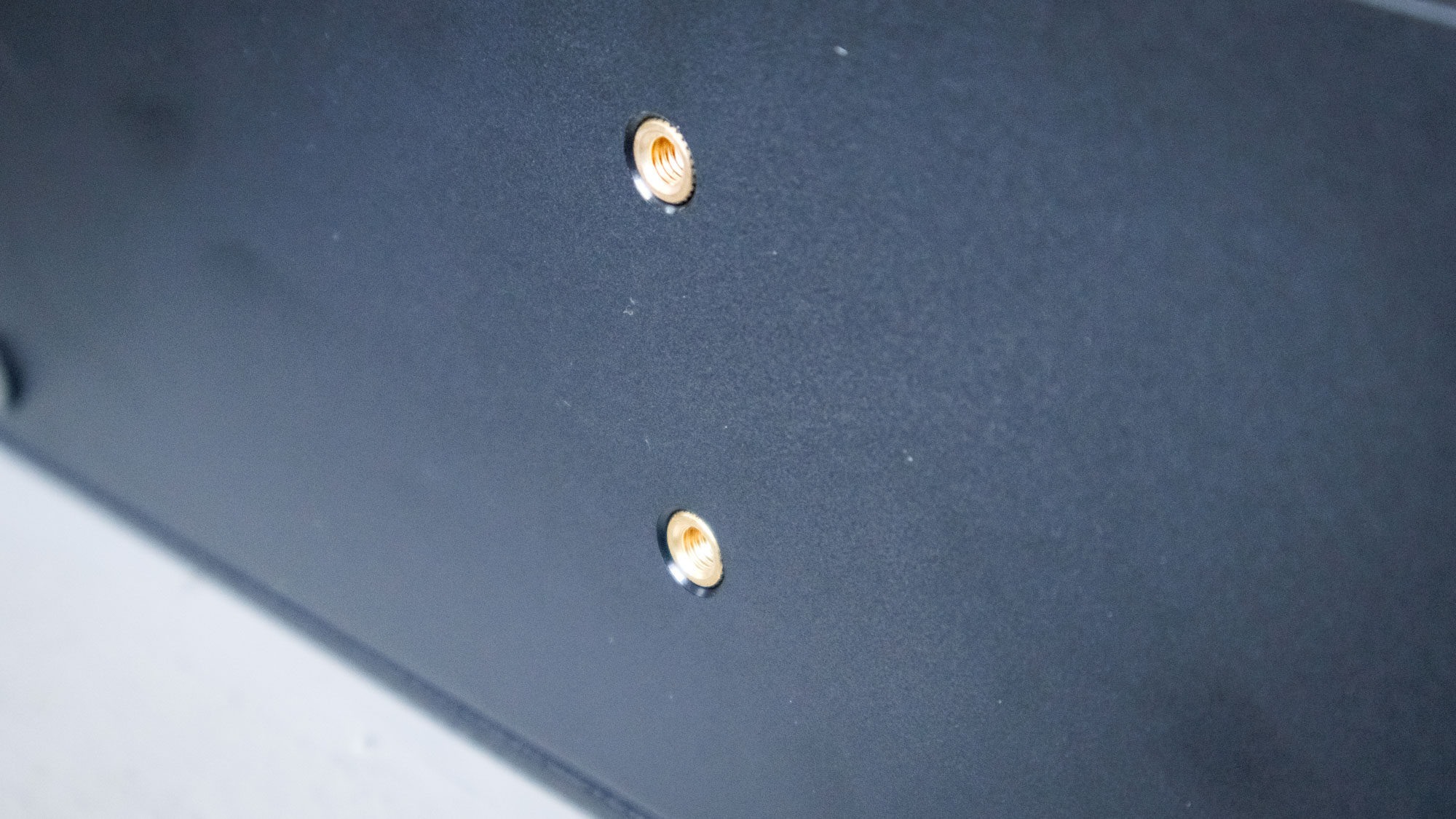
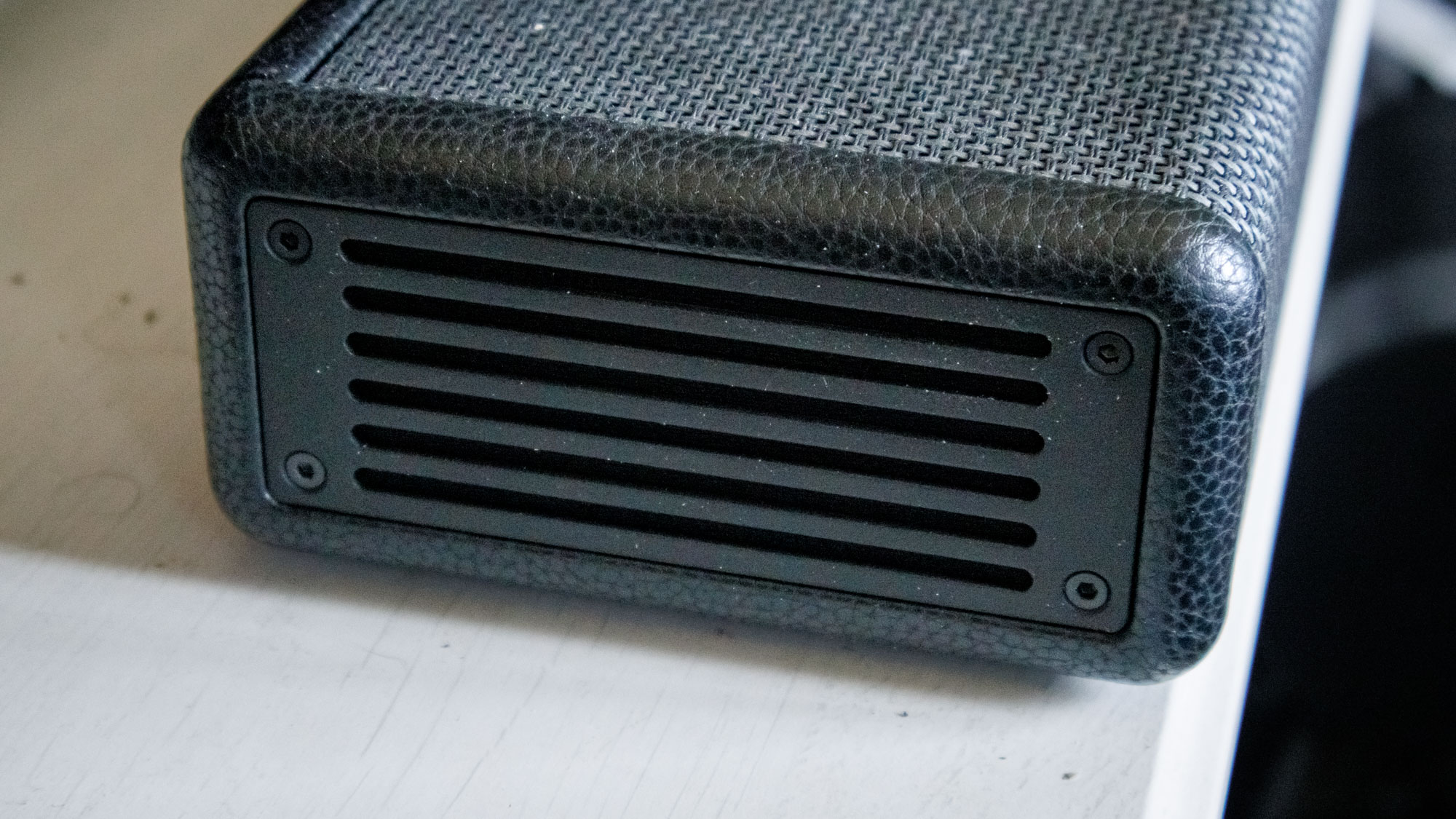
Build quality is excellent, with premium fabric making up the grille and excellent material choices all around. Even better is the potential for repair. Break something, and I’m told you’ll be able to find parts like the end plates, grilles, and even internal components like drivers available to buy on the Marshall website, should you want to replace them yourself. You can even send the broken parts to Marshall to be recycled as well, which is a nice bonus.
Marshall Heston 120 review: Connectivity and control
- Plenty of physical inputs
- No voice control
- Excellent new Marshall app
First off, while the Heston 120 is a WiFi-connected soundbar, it’s not really a smart soundbar. There’s no voice control support, so you’ll be left changing the volume with your TV remote, on-device volume knob, or the new Marshall app.
Beyond a lack of voice support, the only other connectivity option you’re missing is an optical port — and given that it’s 2025 and optical ports are ancient history to all but the most dedicated fans of data transmitted over laser, it's no great loss. Because, other than that? The Heston’s inputs and outputs are better than just about everything else you can buy today.
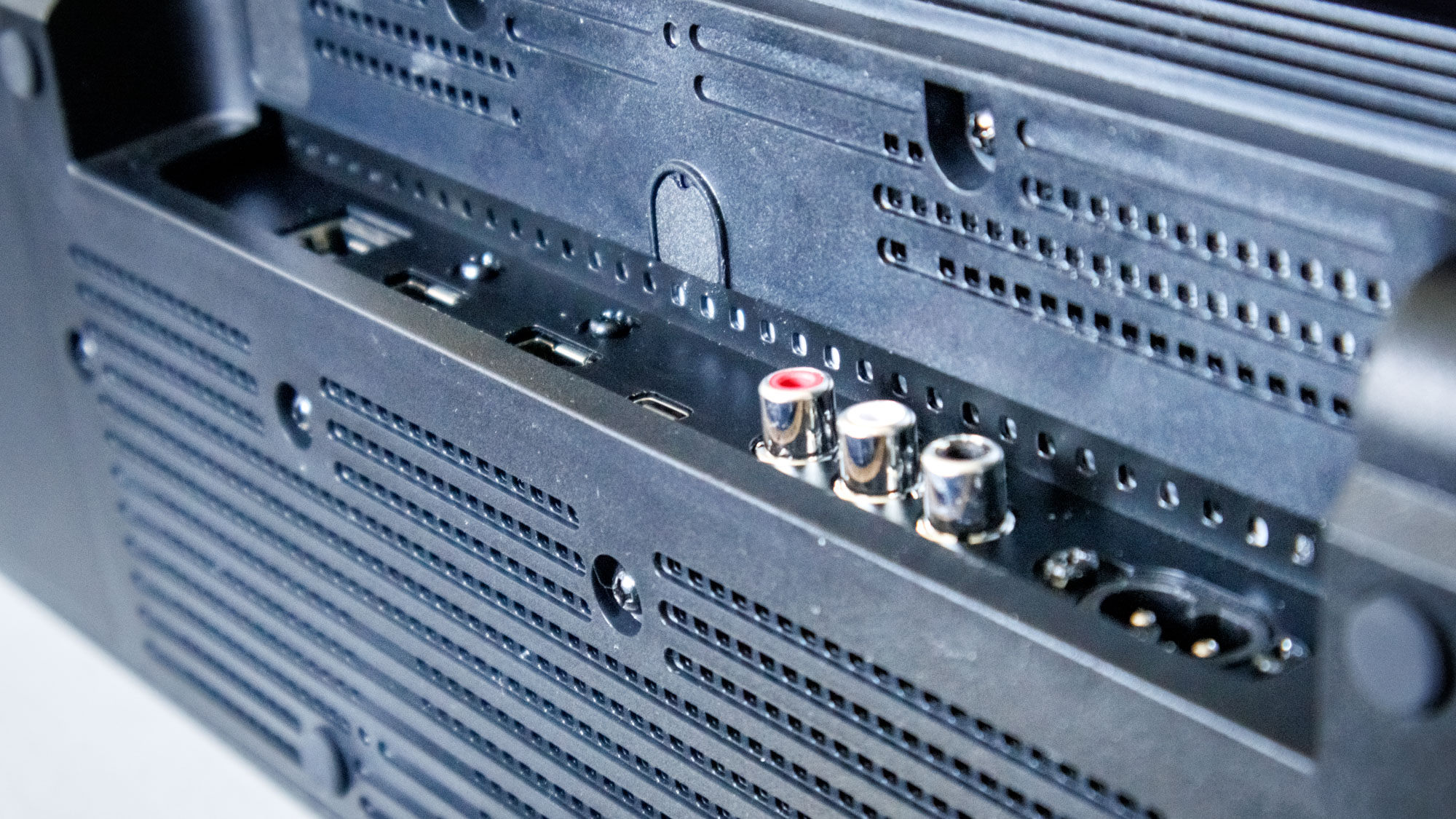
There are so many ports on the back of the Heston 120. There’s a pair of HDMI ports, one for eARC and the other for passthrough, an Ethernet port for a more stable internet connection, a USB-C port that can be used to charge devices, and then an analog RCA connector so that you can connect legacy hardware like a turntable. There’s no built-in phono pre-amp so you’ll need one of the best turntables with one built in, but it’s a lovely addition to really round out the inputs.
Unlike the aforementioned Samsung or Sonos soundbars, there’s also a generic mono-RCA output. While Marshall is working on a wireless subwoofer for the soundbar that will work like Sonos’ Sub 4, there’s a physical output for a separate subwoofer. That means you can choose your own sub to go with the soundbar.
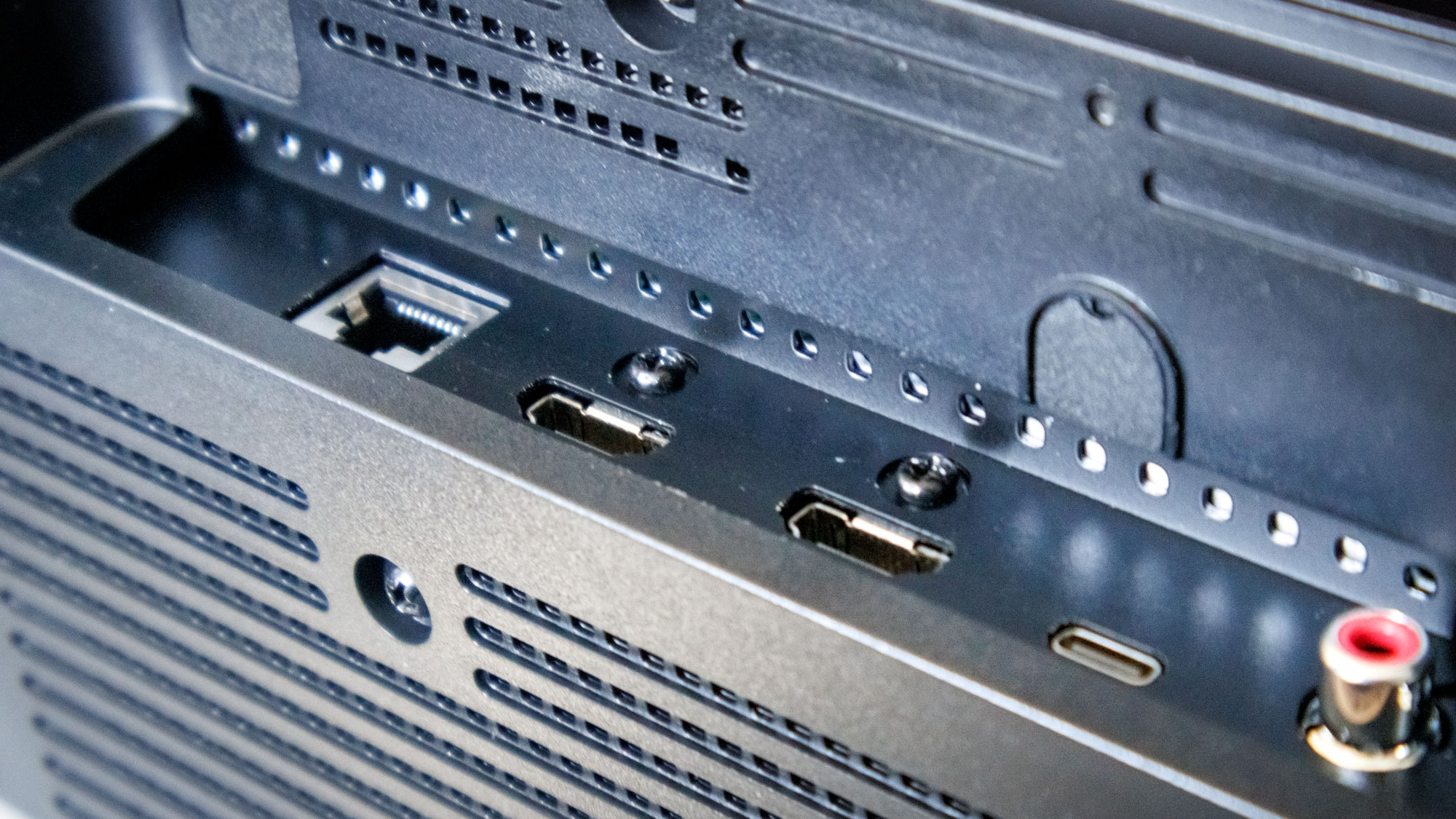

Wireless connectivity comes in the form of WiFi 6 and Bluetooth 5.3, with all the lovely extras you’d expect. The Bluetooth connection enables Auracast, as well as the potential for more devices to connect to the soundbar. Marshall has been tight-lipped about what kind of devices to expect and how they’re going to work when I asked about the potential for separate surround speakers, but I suspect we might see something in the future.
Control-wise, you’ve got the aforementioned knobs across the top. There are three — volume, EQ, and source. They’re all smooth and satisfying, and the latter two click down to switch between bass and treble, play and pause music, and select the source.
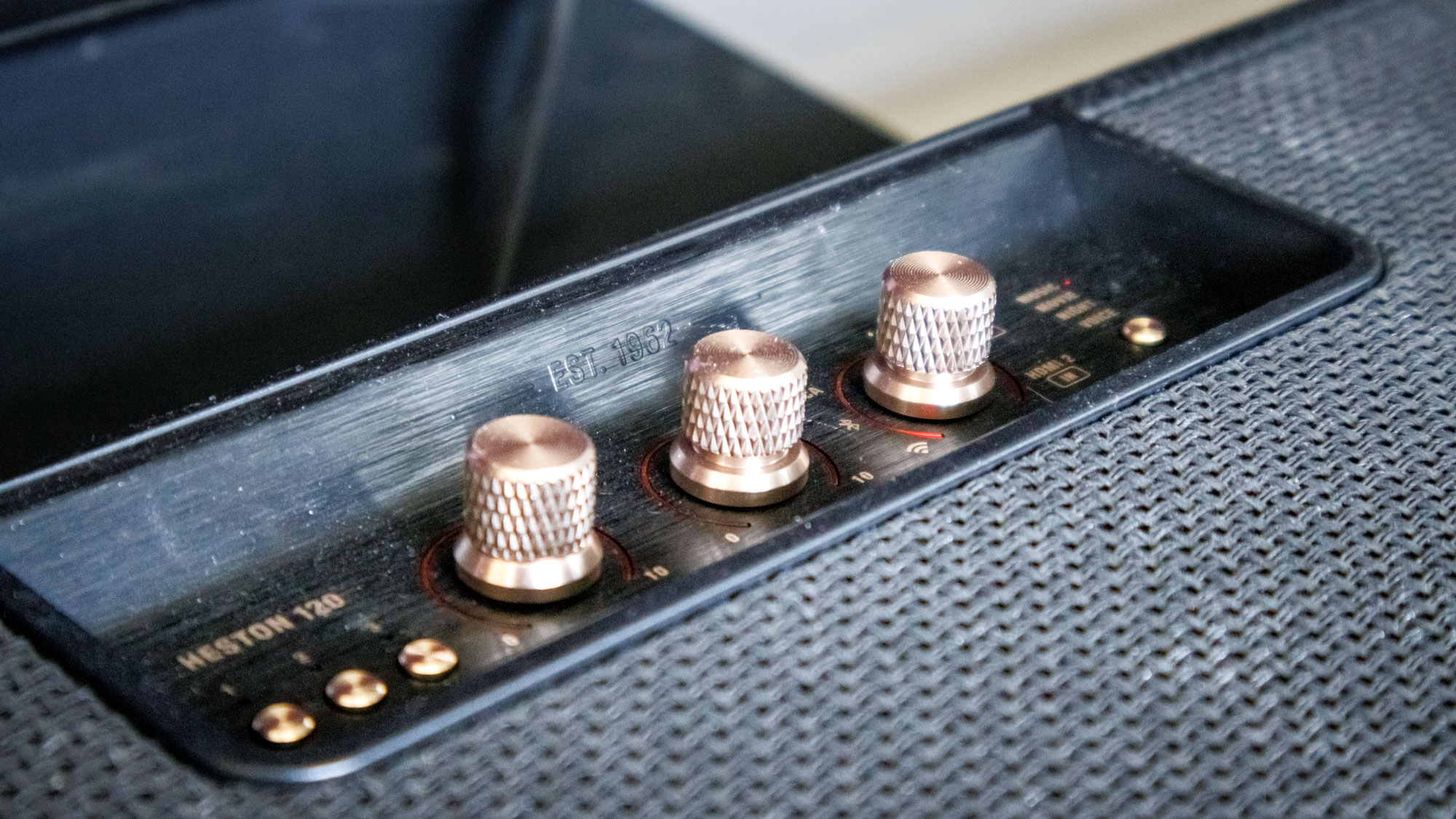
Finally, there’s the Marshall app. It’s a completely new experience this time around, retaining the visual flair of the old Marshall Bluetooth app, but sprinkling in new WiFi features for internet connectivity. Once logged in, you can play music from various streaming services so that you don’t have to dip into the Spotify or Tidal Connect menus separately, although both are supported.
Every aspect of the soundbar can be controlled from the app, including EQ, sound mode, volume, source, and more. It’s well laid out and simple to use — good app.
Marshall Heston 120 review: Setting up
- Just plug it in
- Sound setup is simple
- You might need to go into TV settings for Dolby Atmos
Technically, you don’t even need to connect the Heston 120 to the internet or the app if you just want to play sound from your TV. Plug it in, connect the HDMI eARC port to the correct slot on your TV, and… watch your stuff. Easy!
You can, of course, go more in-depth if you want to use every setting and feature that the soundbar has to offer. Once you’re all plugged in, you’ll need to open up the app. From there, you’ll connect to the soundbar and get the internet connection all set up.
There are then sound options to dial in, and you’ll want to start with the Room calibration. From there, you’ll hear a series of different guitar plucking noises, and the app will load a sound profile. I had absolutely no connection issues during the setup process — it all just kind of worked.
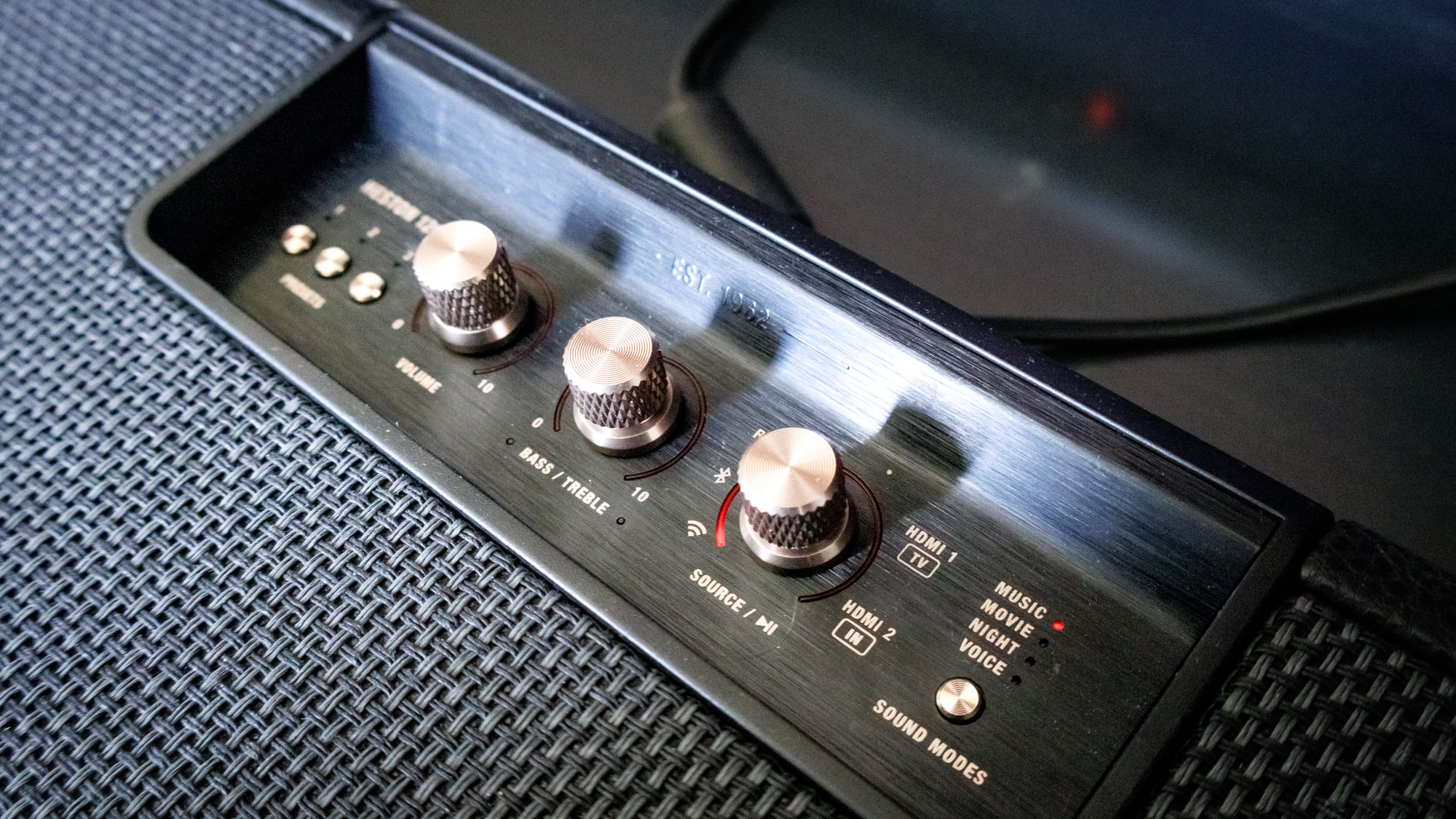
To further dial in the sound, you can use the bass/treble knob on the top of the soundbar, or within the app. You can also choose the different sound modes, including Movie, Music, Night and Voice. Music is automatically selected when you play music through the bar, and Movie when it's connected to your TV. Movie mode seems to boost bass, while Music seems to put more emphasis on mid-range frequencies.
The latter two sound modes are necessary for Dolby certification, and I don’t like them on anything you find them on. Night mode reduces the bass so that you don’t wake anyone up when watching late at night, and voice mode raises dialog volume. They work, and for some users, they might be more useful than they were for me.
Marshall Heston 120 review: Performance
- Excellent musical sound profile
- Surround lags behind slightly
- Very good dialogue
If the Sonos Arc Ultra is the ultimate soundbar for watching movies, the Marshall Heston 120 is one of the best for listening to music. While most soundbars are a TV speaker first and music speaker second, the Heston 120 wants to be excellent at both. As a result, there really isn’t a similarly priced soundbar that comes close musically.
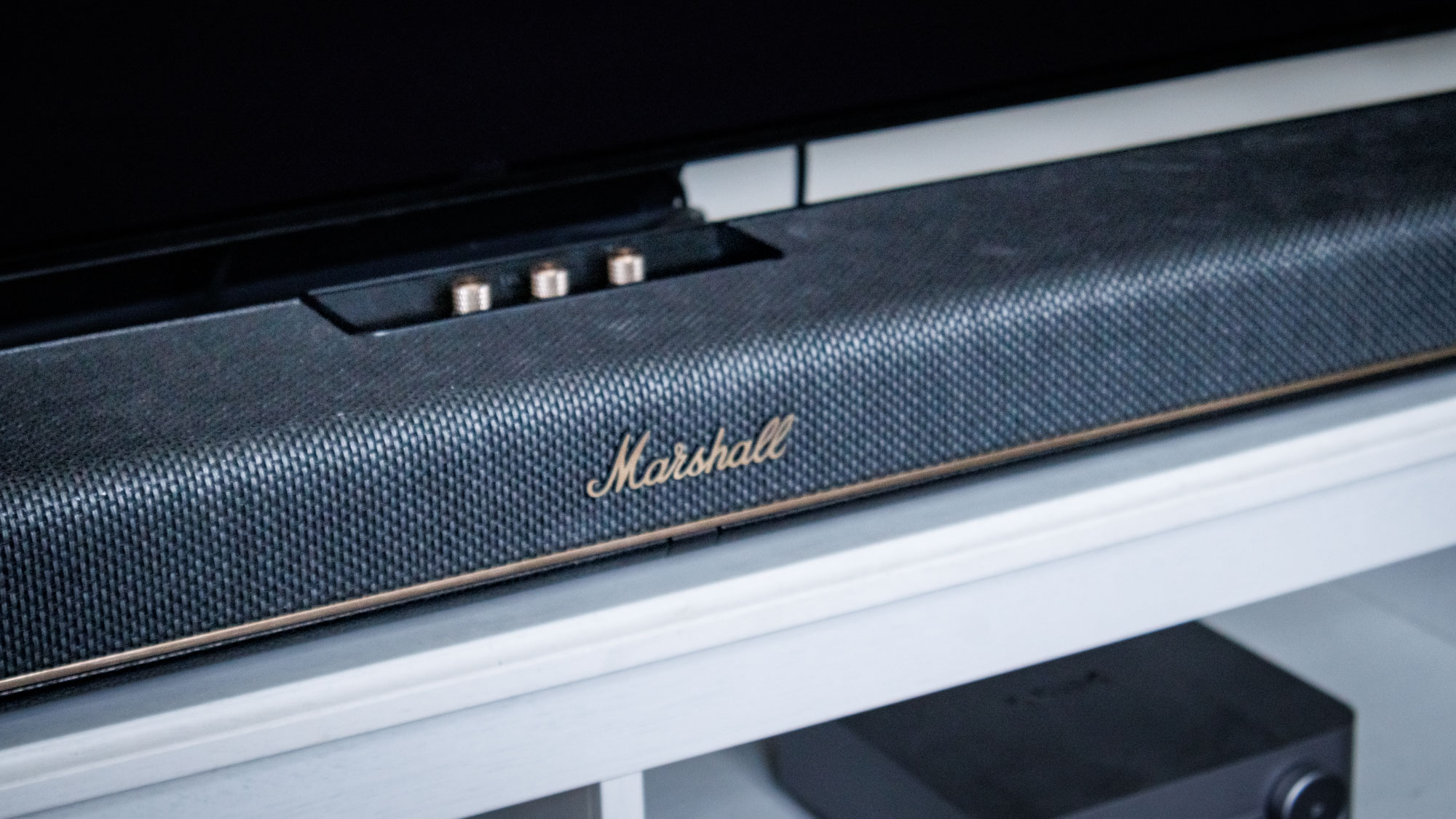
There’s some great sonic control on display from the Heston 120. The audio is very well spaced out on account of the size of the bar, and instrument separation is very good. I gave Vola’s I Don’t Know How We Got Here a spin, and discovered an impactful, dynamic, and engaging listen waiting for me. Vocals were a particular strength, and there was surprising bass reproduction thanks to the pair of sub drivers inside the bar. Bass was more impressive in the Heston 120 than the Sonos Arc Ultra on its own, so there’s less need to add in a sub should you want the floors to rumble during playback.
There’s support for Dolby Atmos music as well through Apple Music and Amazon Music Unlimited, and it sounds really good. There’s all the extra space that you’d want from a spatial mix, with the likes of The Weeknd’s Blinding Lights easily filling my living room. Elements showed good separation, and the spatial effect was up there with the likes of the Sonos Arc Ultra and a pair of Sonos Era 300s. There’s still some of the thinning out I tend to find with any spatial audio arrangement, but that’s a quirk of the format rather than the soundbar.
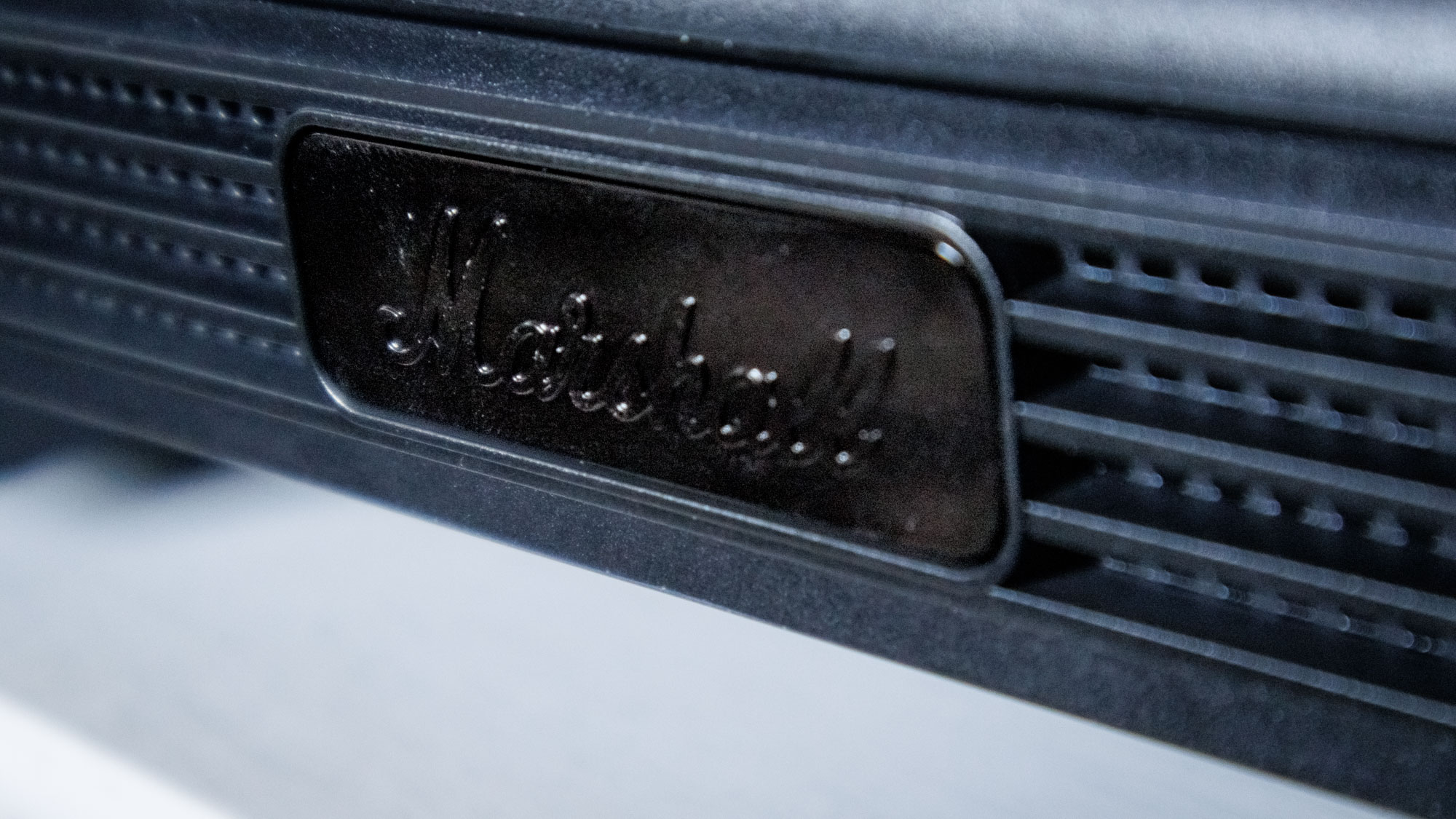
It’s movies you’ll want Dolby Atmos for, and the Heston 120 is more than happy to provide. There is one caveat to movie sound though — the surround channels. The Heston 120 features a 5.1.2 setup, or 5 surround drivers, a subwoofer, and then two upfirers for Atmos. That’s not as strong as the Sonos Arc Ultra’s 9.1.4 surround, and it does show when you're watching your movies. The surround bubble is ever so slightly looser on the Heston, and the atmospheric effects from above are slightly more subdued.
With that out of the way, the Heston 120 is still excellent for movies. The Atmos effect meant that the opening scene of Star Wars: Episode III sounded and felt massive, as Obi-Wan and Anakin darted through space, droids hot on their heels. Starships cruise from every direction, loud and lumbering. The sub driver gives greater low end than you’ll find in the Sonos Arc Ultra as well, despite the slight downgrade in spatial effects.
Standard surround mixes are excellent. The Nostromo cruises to your side in the opening to Alien, loud and intimidating. The Star Destroyer at the opening of A New Hope dominates the space, filling the room with the sound of its engines. This is a soundbar that’s supposed to be good at both movies and music, and to excel at the latter, it seems some compromises have had to be made in the former — but this is still a great, cinematic experience.
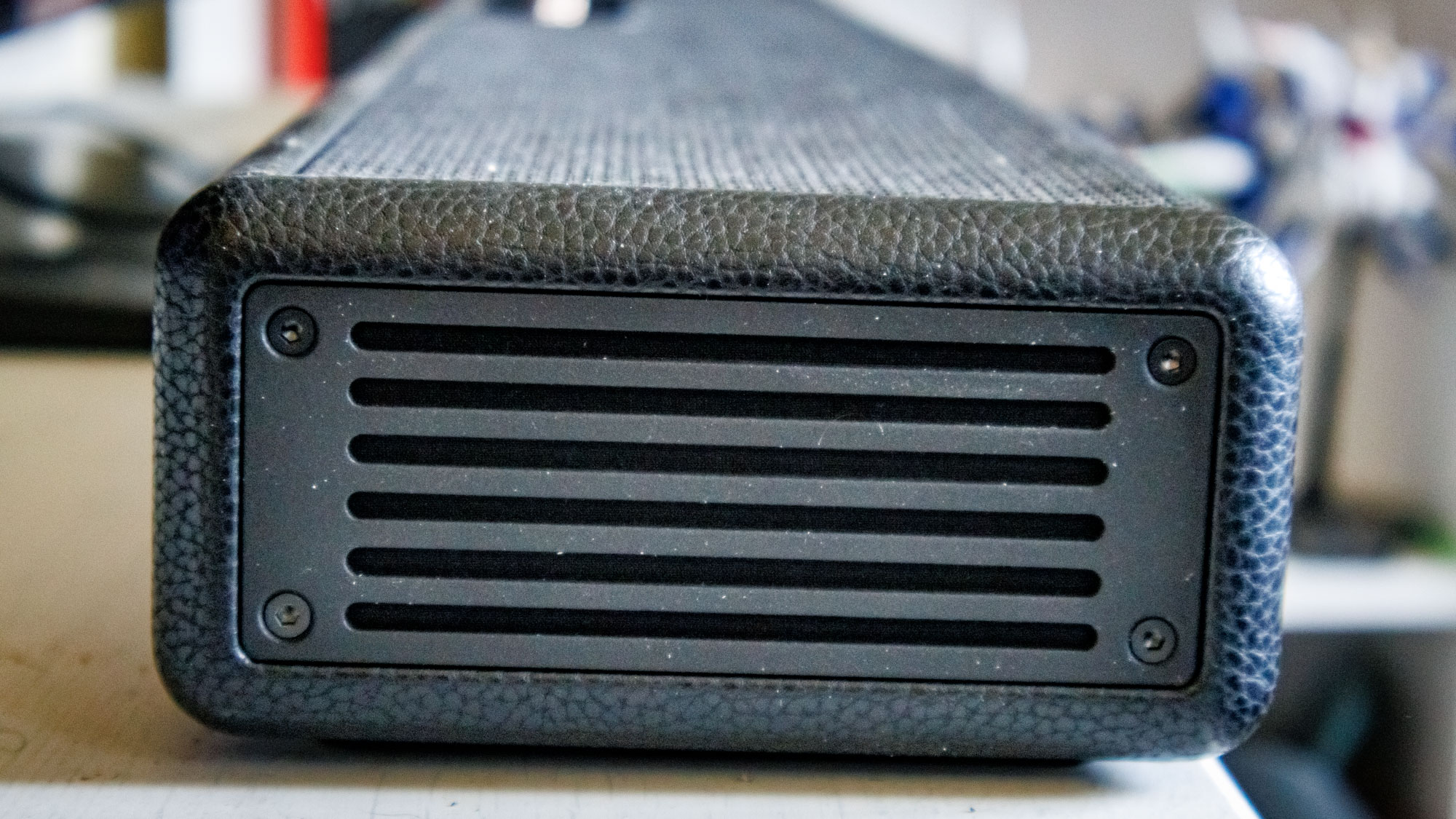
A word, finally, about the bass. The pair of sub drivers make for a bassier time than the solus Sonos Arc Ultra, although for larger rooms, you’ll still want a separate subwoofer. Marshall will be offering its own wireless sub later this year, but thanks to the standard sub-out on the back of the soundbar, you can use your own.
I hooked it up to the KEF KC62 and a Q Acoustics Sub80, and found setup easy, and an increase in the bass beyond that of even the Arc Ultra and Sub 4 combo. Why is this great? Because not only does it add more audio flexibility, it could save you money, with many budget-friendly bass makers to add more rumble to your movies.
Marshall Heston 120 review: Verdict
If you want the absolute best surround sound movie experience in a soundbar, then you’re still best off with the 9.1.4-channel Sonos Arc Ultra. But the Heston 120 does throw a wrench into Sonos’ well-oiled machine.
The movie performance and surround sound of the Heston 120 are still excellent, and the bar provides plenty of Dolby Atmos fun when you want to watch the latest blockbusters. It also manages something that so many other soundbars don’t seem to nail down; it remembers that a soundbar is the perfect audio center for a living room.
Thanks to its excellent music playback and connectivity, the Heston 120 is actually, in my eyes at least, a better all-round product than the Sonos Arc Ultra. It’s not for everyone with its styling, but its feature set means it stands out in a very busy space. For Marshall’s first soundbar, it’s an absolute triumph, and potentially a better buy for more users than the Sonos option and its continuously disappointing app.
After all, it’s nice when something just works.

Tammy and her generous collection of headphones have found a new home — Tom's Guide! After a two-and-a-half-year stint as iMore's resident audiophile, Tammy's reviews and buying guide expertise have more focus than ever on Tom's Guide, helping buyers find the audio gear that works best for them. Tammy has worked with some of the most desirable audio brands on the planet in her time writing about headphones, speakers, and more, bringing a consumer focussed approach to critique and buying advice. Away from her desk, you'll probably find her in the countryside writing (extremely bad) poetry, or putting her screenwriting Masters to good use creating screenplays that'll never see the light of day.
You must confirm your public display name before commenting
Please logout and then login again, you will then be prompted to enter your display name.
